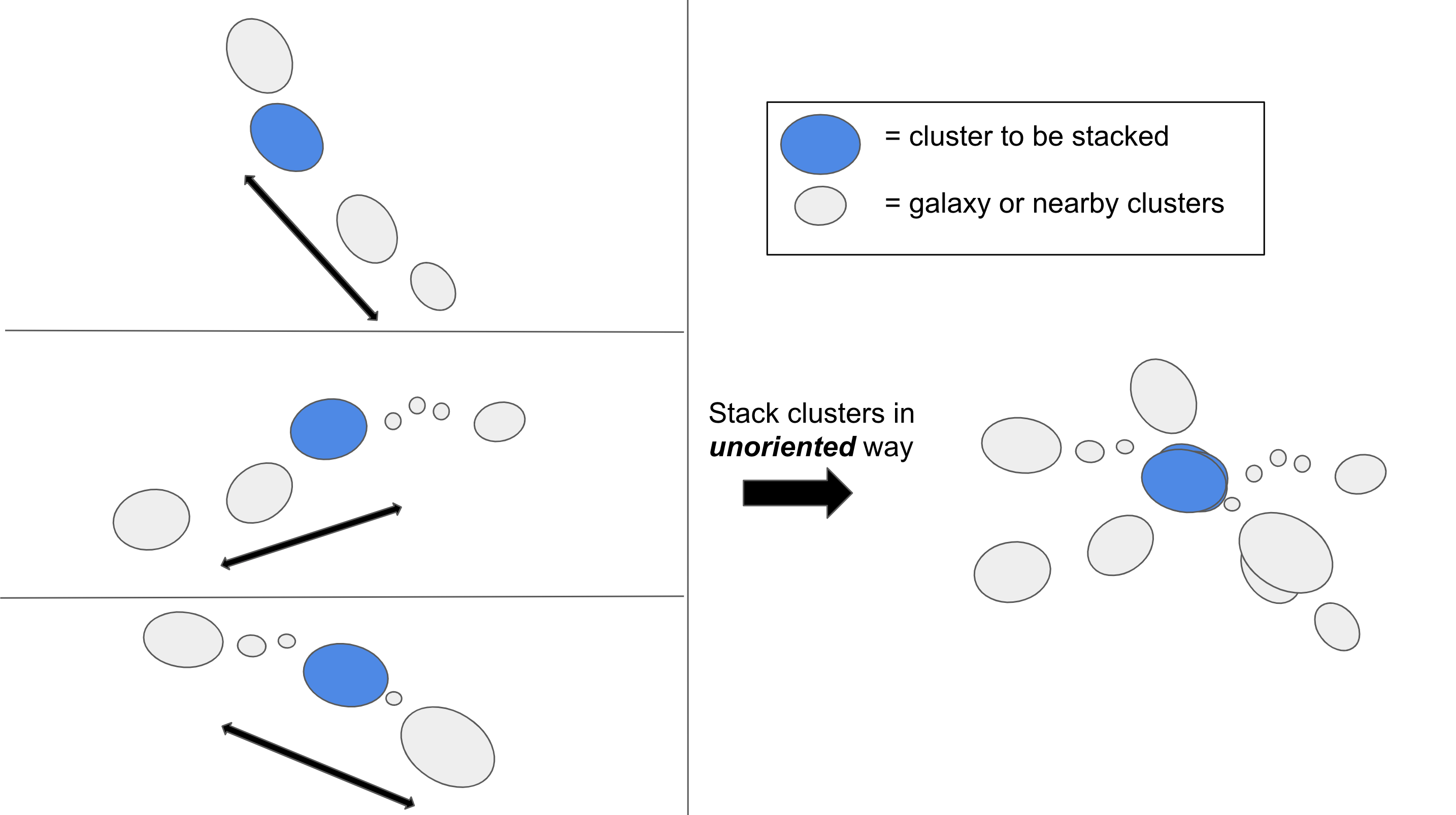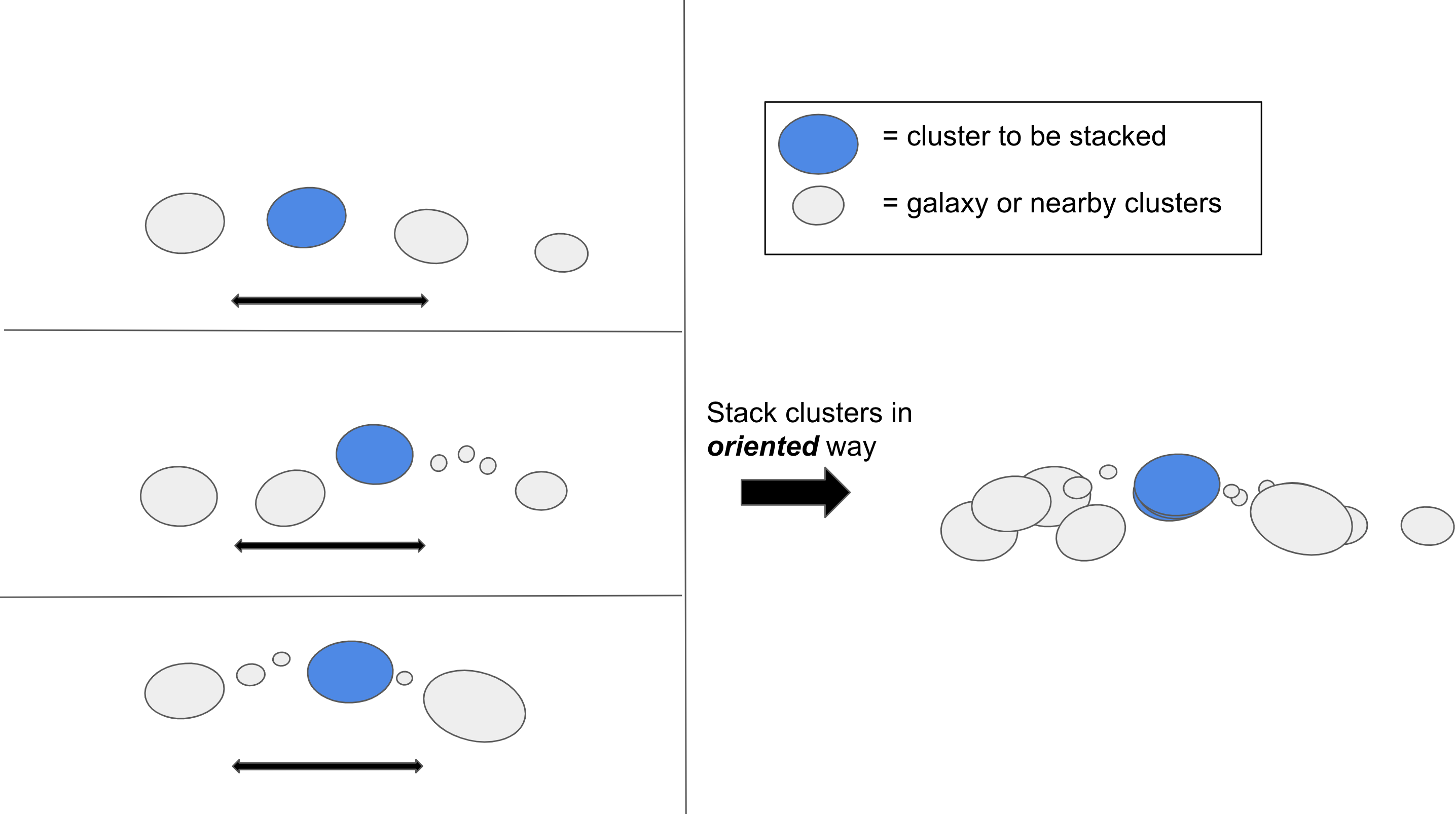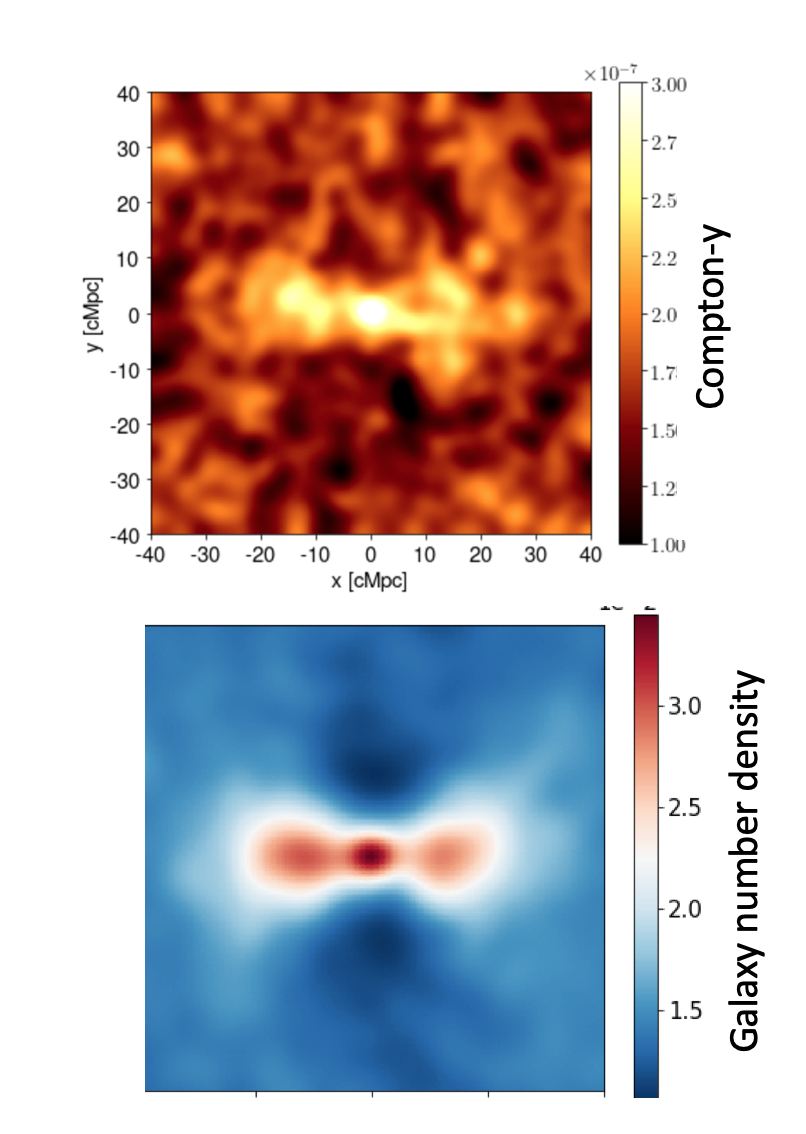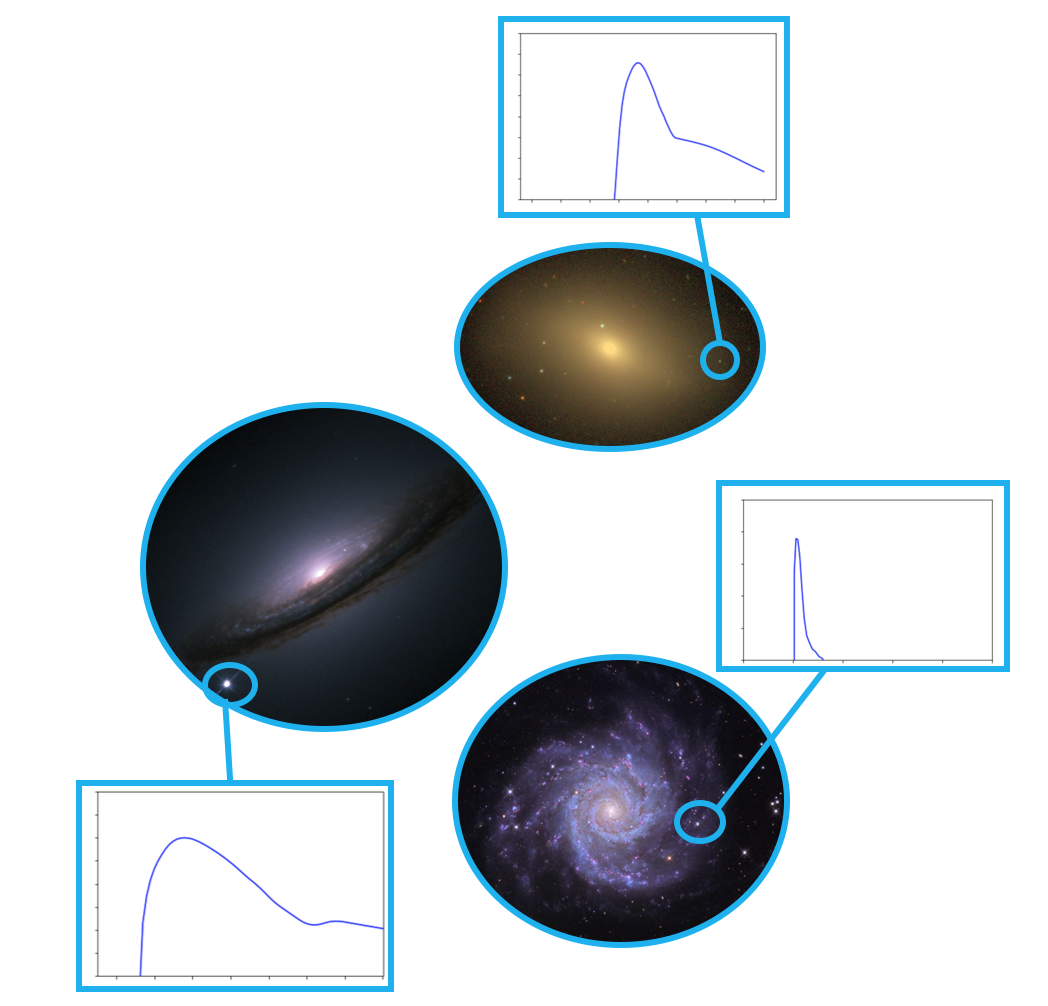My Research
My full list of publications can be found on the ADS.
Oriented stacking of thermal Sunyaev-Zel'dovich maps
I am interested in the cosmological and astrophysical information held in extended, anisotropic structures such as cosmic filaments and superclusters. The multi-scale and asymmetric nature of such structures present a challenge for finding generalized descriptions. The thermal Sunyaev-Zel'dovich (tSZ) effect is a useful tracer of the distribution of thermal energy in the cosmic web. However, the relatively low pressure of inter-cluster filaments (compared to clusters) makes their tSZ signal weak -- in currently available Compton-y (tSZ) maps, the filament signal is far below the noise. I am working on new techniques which use stacking and combine multi-wavelength datasets to tease out the average signal from superclusters. Recently our group submitted a paper in which we validate the method of 'oriented stacking' using simulations and apply it to Compton-y data from the Atacama Cosmology Telescope and galaxy data from the Dark Energy Survey. We detect thermal energy anisotropy surrounding DES redMaPPer clusters; demonstrate how the superclustering SZ signal depends on the cluster's location in the surrounding large-scale structure; and show how the method can be used to detect late-time non-Gaussianity from nonlinear structure growth.



Anisotropic bias through oriented stacking
As a follow up to our first paper, we are using the oriented stacking technique on maps of the galaxy number density from DES as well as Compton-y maps from ACT. By comparing the two, we are measuring the relationship between galaxies and gas in extended anisotropic structures -- a relationship which depends both on the cosmological model and small-scale baryonic feedback effects. We compare this measure of anistropic relative bias (of the galaxies and gas, with respect to the underlying dark matter field) with simulations run under certain cosmological and astrophysical assumptions. The paper is in-prep.
Simulating Transients and their Host Galaxies
I also work with the LSST Dark Energy Science Collaboration in preparation for the Vera Rubin Observatory. Working with Alex Gagliano at the University of Illinois, we have developed an association pipeline which matches transients, simulated using the SNANA software, with realistic host galaxies from the CosmoDC2 simulation (Korytov+ 2015). Our pipeline extrapolates empirical relationships observed in the limited existing transient-host data to z=3. Teams will use our simulated data in the ElaSTiCC challenge (the follow-up to the PlasTiCC challenge) to develop rapid classifiers for transients observed by Rubin. Our inclusion of host information, new in this iteration of the challenge, will allow teams to train classifiers to use host properties to aid classification. The paper is on the arXiv and published in MNRAS. The Rubin Observatory's first light is expected in 2022/2023.


Superclustering in Alternative Cosmologies
I am using the Peak Patch simulation to generate large-scale structure for universes with different cosmological parameters. Specifically, I am investigating how the superclustering statistics we have developed depend on properties of the dark energy. I am interested in beyond-Λ models of dark energy such as time-varying and coupled dark energy.
Astrophysical Feedback in Hydrodynamical Simulations
I am using simulations from the 300 cluster project to examine how the anisotropic tSZ signal surrounding clusters varies with changes to the AGN feedback implemented via the Simba code.
